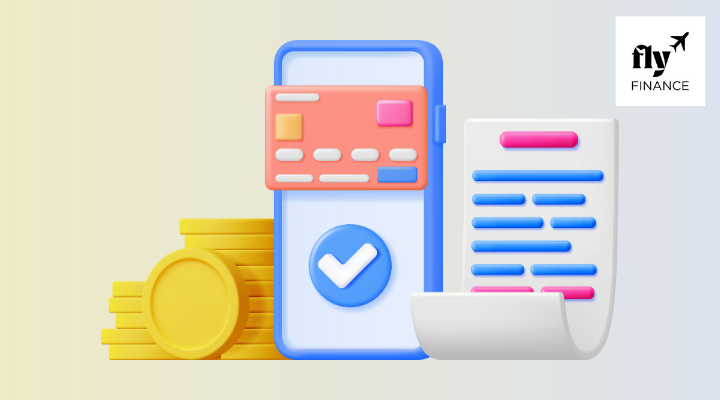A post office international transfer takes place via the Western Union Money Transfer platform. In addition to Western Union, Indiapost also uses MoneyGram. Transfers made via both these platforms to eligible Indian post offices are regulated by the Reserve Bank of India (RBI). Furthermore, the transfers are a part of the Money Transfer Service Scheme (MTSS) of the government of India. As per this scheme, only inward remittances are accepted by post offices. Furthermore, these inward transfers are only accepted if they are for personal reasons. To learn about other details, please read the blog thoroughly.
Also Read: Cheapest International Money Transfer: From Australia, UK, USA, Ireland And Others
Table of contents
What is Post Office International Money Transfer?
Indiapost provides inbound international money transfer services in partnership with Western Union Money Transfer and MoneyGram. This service is secure, rapid, and dependable, offering a convenient method to transfer personal funds from overseas to recipients in India.
Money can be received from 195 countries via designated post offices. Beneficiaries can access the funds within minutes of the sender initiating the transfer. Recipients need to provide adequate details to confirm their identity and residential address. The option to receive through Western Union Money Transfer is accessible at 7212 Post Offices, while the MoneyGram facility is present in 500 post offices.
This Post Office International Transfer is guided by the Money Transfer Service Scheme or MTSS. It is a rapid and easy method of receiving money internationally in India. This scheme allows inward transfers for international tourists and family members of NRIs only. However, MTSS does not allow anyone in India to send money internationally.
Also Read: Nach E-Mandate: Meaning, Cancellation, Process, Uses
Transfer Process
To send money from over 195 nations and territories to India, NRIs, parents of international students studying in India, and kin of visiting overseas tourists must visit nearby Western Union locations where the service is available. After reaching a Western Union branch, the sender has to follow the following steps to complete the international transfer:
- Ask for the requisite form
- Further, fill out the details of the recipient in India
- Now, Mention the amount to be transferred internationally
- Now, Western Union will provide a receipt containing the transfer amount and Reference Number/Money Transfer Control Number
- After this, the sender needs to inform the receiver about the amount and unique number
- With the information, the payee must visit the eligible post office in India and fill out a form to receive the transfer. The recipient has to furnish a valid proof of identity.
- Thereafter, the post office will verify the transaction and provide the money and the receipt to the beneficiary.
With this, the inward remittance is complete. The entire process of receiving the funds at the post office takes not more than 10 minutes.
Documents Required at Post Office
To complete the process effectively, the payee needs to produce certain documents. This is mandated by the Reserve Bank of India and the Government of India to prevent unlawful activities. Here are the required government-issued documents accepted by post offices:
- Driving Licence
- Election Card
- PAN Card
- Aadhar Card or any proof of identity provided by the government of the respective country
- Ration Card
Also Read: How To Transfer Money Internationally Between Banks?
Transfer Limit
The Reserve Bank of India has put limits on the number of international money transfers and the amount of funds being transferred to India. This is done to prevent money laundering and terrorist acts in India.
In addition, the apex bank also directs eligible post offices to treat the payee/receiver as “Most Favoured Customers” to ensure efficient and professional service to them.
These preferred customers must go through the following post office international transfer limit so that they get their inward remittances on time.
Transaction Limit
The beneficiaries in Indian territory receive the inward remittance in INR. They receive some amount in cash and some in their bank account or via an Account Payee Cheque. However, there are certain exceptions for foreign visitors to India. Here are the key details:
- The RBI regulations specify that a maximum of USD 2500 can be sent at once, but only for personal purposes.
- Cash payments of up to INR 50,000 are allowed to be given to the recipient. If the amount surpasses this limit, it will be provided through a check or directly credited to the beneficiary’s Post Office Savings Account. For foreign tourists, larger cash amounts can be given.
Limit on Number of Inward Remittances
A single recipient can receive a maximum of 30 transactions within a single calendar year.
Also Read: Same Currency International Transfer
Delivery Time
Dependents of NRIs in India, international students pursuing higher education in India, and foreign tourists receive inward remittances in post offices from abroad within 10 minutes.
Also Read: How To Transfer Money To A Foreign University?
FAQs
Ans. No, people from India cannot send money internationally from India to abroad. This facility is not allowed under the Money Transfer Service Scheme.
Ans. The RBI regulations specify that a maximum of USD 2500 can be sent at once, but only for personal purposes.
Ans. A payee/receiver/beneficiary in India receives money from abroad through Indiapost within 10 minutes.
Stay in tune with FlyFinance to avail of international money transfer services and study abroad loans.





























